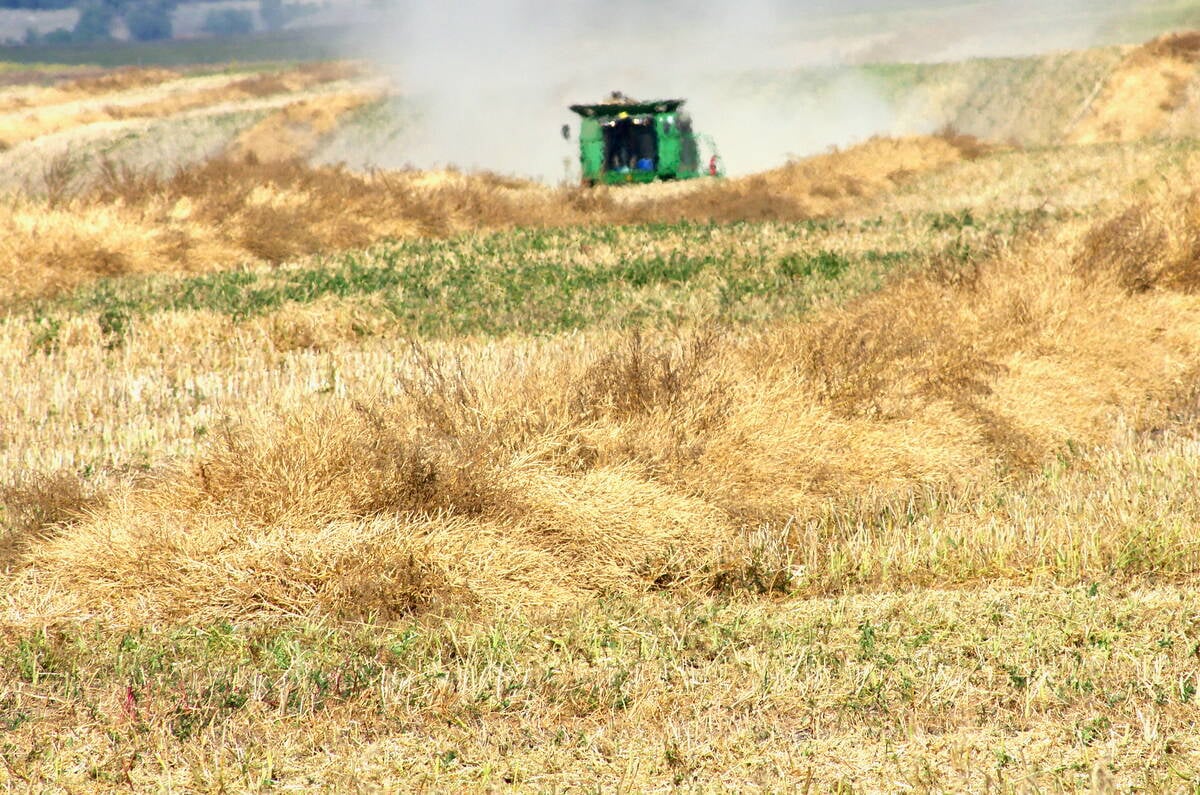Alberta
South
Unseeded acres in southCrops remain three weeks behind normal development due to the cool, wet spring. Unseeded acres will be lower than expected.Less than 500,000 acres will go unseeded in Alberta, with most unseeded acres in the southern part of the province.Conditions have improved substantially from mid June. Cereals are 65 percent good to excellent, canola 56 percent good to excellent and peas and 73 percent good to excellent.
Central
Conditions goodOverall crop conditions have declined. Approximately 83 percent are rated good to excellent. Approximately 30 percent of canola fields are now in bloom.
Read Also

Manitoba searches for Plan B on canola oil exports
A new report explores Manitoba’s current canola oil trade and possible alternative markets to the U.S.
Northwest
Forages doing poorlyMost fields are a week behind normal crop development. Despite subsoil moisture ratings of 42 percent poor, 77 percent of crops are rated good and 16 percent are excellent, the highest of any region in the province.Forage crops are not faring as well. Approximately 42 percent of hay crops are poor to fair.
Northeast
Hay crops goodSubsoil moisture is 84 percent good to excellent. Pastures and hay crops are flourishing, with 85 percent good to excellent. Overall crop ratings have declined since the middle of June.
Peace And B.C.
Rain neededCrop development is normal for this time of year. Rain is needed as 49 percent of subsoil moisture is poor and 43 percent is fair. Crop ratings have dropped in the last two weeks because of dry conditions. Approximately 36 of canola fields are poor to fair. Nearly 26 percent of cereals are poor to fair.
Manitoba
Southwest
Crops improvingHail fell on areas around Hartney, Souris and Nesbitt over the weekend. But fields in the region began to dry up, improving cereal crops in the region. Canola and flax crops are stressed from excess precipitation. Pulse crops are flowering and showing some signs of root rot.
Central
Armyworms reportedCrop conditions vary from very good to very poor, depending on the location of excess moisture. Bertha armyworm traps are showing low numbers. Hay producers are having difficulty with wet conditions and hay is expected to be lower quality.
Eastern
Some sprayingUneven crop development is evident because of excess moisture. Early seeded spring cereals are 85 to 100 percent headed. Nearly 90 percent of canola is flowering. Intermittent rainfall allowed producers to complete herbicide spraying and move onto applying fungicides for fusarium head blight. Winter wheat is in good condition compared to spring cereals.
Interlake
Pastures floodedIntense thunderstorms hit the northern region, resulting in overland flooding. Pastures are flooded and cattle are being moved to higher land where possible. The southern half of the region is faring better, as only a few millimetres of rain fell closer to Winnipeg. Canola is 60 to 80 percent in bloom and 55 percent of wheat is headed.
Northwest
Fields yellowingStorms and heavy rains have hindered crop development in areas around Dauphin, Ethelbert and Mossy River. Many fields are drowned out, with yellowing, premature bolting and poor root development. Field conditions and yield possibilities are better from Grandview to Roblin.
Saskatchewan
Southwest
Delayed developmentApproximately 70 percent of cereal crops are behind normal development, 61 percent of oilseeds are behind and 62 percent of pulse crops are also behind for this time of year.A week of sun and heat in late June helped crops suffering due to excess moisture.Pasture conditions are 68 percent excellent and 30 percent good.
Southeast
Varied conditionsCrop condition varies from extremely poor to good, depending on moisture received.Approximately 43 percent of the canola crop is rated good, 27 percent fair and 21 percent poor.Spring wheat is 38 percent good, 30 percent fair and 18 percent poor.
West-Central
Pests, disease reportedPea crops are beginning to flower and canola is starting to bolt. Spraying is underway but herbicide application has been challenging in wet fields.Cutworms, flea beetles and leaf diseases have appeared, but flooding has caused the majority of crop damage in the region.
East-Central
Moisture stressExcessive moisture continues to hinder crop progress. Only 12 percent of spring cereals and 14 percent of oilseeds are at normal development.Pulse crops are doing slightly better, with 35 percent of the crop at normal development for this period.About 54 percent of the pea crop is rated as good, while 53 percent of lentils are good.
Northwest
Canola goodSpring wheat and canola are doing well compared to other regions, with 76 percent of wheat and 74 percent of canola rated as good.Hay and pasture conditions are very good, with 59 percent of pastures in excellent condition.
Northeast
Flood damageWith 200 to 400 mm of rain so far this year, there is extensive flooding damage to crops in the area. Pastures have also suffered.Haying will be delayed until fields dry out.














